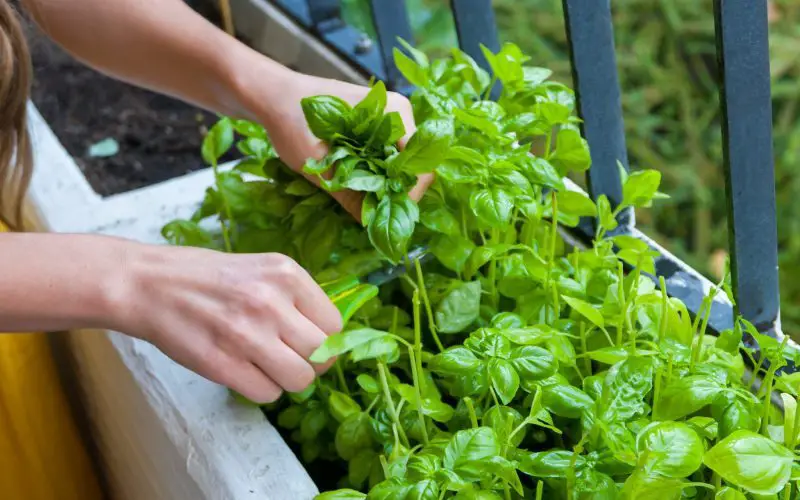Basil is a fragrant and enchanting herb, but mastering the art of leaf harvesting is crucial to avoid harming this delicate plant, whether it’s nurtured in a pot or in the garden.
If you’ve just purchased basil, grab a ruler and check its height: only if it has reached a minimum of 20 centimeters can it withstand leaf cutting, never before. Typically, store-bought plants hover around 10/12 centimeters tall; thus, always ensure it’s robust and tall enough to endure pruning.
Advertisement
However, beginning the harvesting process isn’t as straightforward as it seems.
Let’s explore the correct approach together.
Harvesting Basil Leaves: Here’s How to Do It Without Harming the Plant
To properly harvest basil leaves, you must “top” the plant by picking the ones at the top, never the lower ones.
Gently pluck them and choose carefully: remove them in a rotating manner from different points, picking the smallest ones. Contrary to popular belief, it’s not necessary to start with the larger leaves, as they are closer to falling off. Larger leaves are at the base of the plant, distributing raw sap and vital fluids throughout the trunk and canopy. Tearing them off will affect every part of the plant and weaken it.
By picking the upper leaves, this risk is avoided, as is the danger of flowering. Why, you ask? Isn’t it natural? Yes, it is, but unfortunately, it hinders the growth of new leaves and saps vitality from the entire plant. That’s why topping basil is the best solution to maintain the plant’s health.
Detach the leaves by pulling them off with your hands or by making a 45-degree cut using sharp scissors. Do this as close to the stems as possible to encourage new growth.
Advertisement
How to Preserve Basil Leaves
If you’re not using them immediately, store your bunch in a glass jar with water. Place it in a cool, dry place or in the refrigerator after washing and drying the leaves thoroughly. Roll them on a kitchen paper towel and place them in a plastic food bag.
You can also preserve them in oil: place the leaves in a sterilized jar, add a pinch of salt, and pour in the oil, forming layers up to the jar’s neck. Seal and store it in the refrigerator. Once the basil is used up, the oil will be infused with its flavor. Use it in your recipes.
Or, freeze them. Blanch the leaves for two seconds, drain them, and immerse them in a container of ice water to halt the cooking process and seal in pigments and aromas. Dry them thoroughly, then place them between small pieces of parchment paper, put them in a plastic food bag, and finally, store them in the freezer. They will keep for at least 6 months.
Don’t discard the stems; they can enhance your recipes wonderfully. Chop them together with onions for an aromatic sauté, add tomatoes, and prepare a delicious sauce. Alternatively, use them to propagate a new plant through cuttings. Place them in a glass of water, change it frequently, and within 15 days, you’ll see roots sprouting. Now you can plant them and wait for them to take root!
Isn’t it fantastic?



